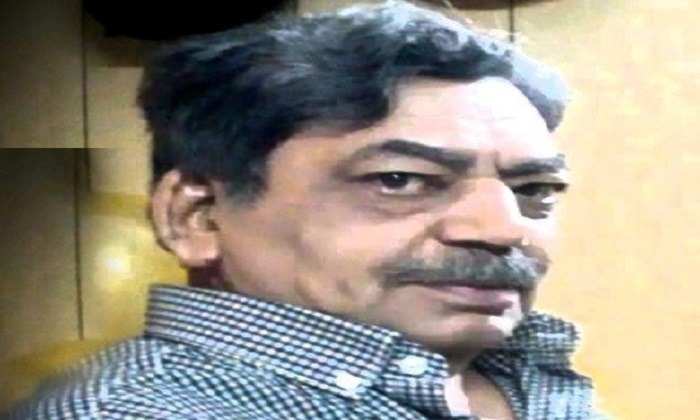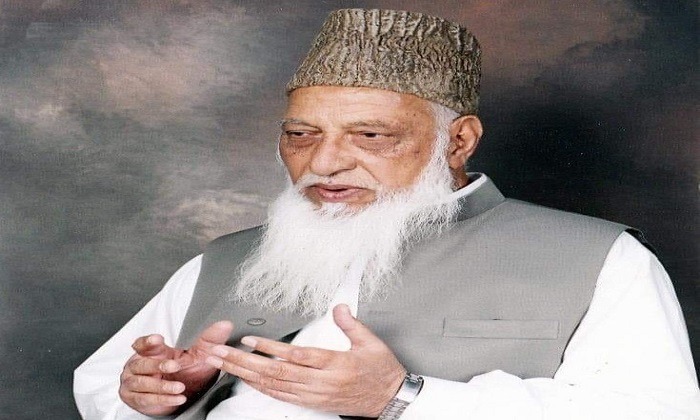Elif Shafak ۔ My Favorite Writer-Rashid Javed Ahmed
Elif Shafak was born in Turkey to Turkish parents. She grew up in her mother’s lap after the separation of her parents. This extraordinary childhood had a profound effect on her later writings. According to literary critics, she is a unique voice in Turkish and world literature. She has written a total of 9 books, including 3 novels. The books are in both Turkish and English and have been translated into many other languages. In addition to being a writer, she is also considered a political scientist. In addition to her international relations degree, she has an MA in Gender and Women’s Studies and a doctorate in political science. She created literature for children and she also writes songs for rock musicians. Her stories feature women, minorities, immigrants, ordinary people and world spirits. Her novels contain beautiful combinations of different cultures, traditions, history, philosophy, Sufism and cultural politics of the nations of the world, as well as East and West. The first Turkish novel, Panah, received a literary award. The novel ,The Flea Palace won the Best Fiction Award. Many other novels won prizes.
I have read some of Elif Shafak’s novels to the best of my ability and availability. The novel Forty Rules of Love is the most widely read novel in a very short time, despite the absence of any thrills. In Turkey alone, 500,000 copies of the novel were purchased, and France awarded the Special Literature Award. Denying status and cultural appearance, the novel is about the eminent personalities of the seventeenth century, Maulana Rumi and the Shams of Tabriz. (Shams of Tabriz and Shams Tabriz of Multan are separate spiritual figures.) The self-appointed bodyguards of the time disliked his interpretations. His meeting with Rumi seemed to be his destiny. The story in this novel is mostly told orally by Shams. Shams’s nomadic nature drew him to the city of Konya in Baghdad, where the Romans were already a prominent orator and religious scholar. Elif Shafak has awakened medieval Turkey with its beauty and skill. Her characters are dervishes, common people, sinners, beggars, followers and whores who have tongues. Rumi’s own son and wife also have the right to speak. As the friendship between Rumi and Shams deepens, family members begin to feel isolated. This is not the only character in this novel. Ella and the three Jewish wives. Ella, despite having a family, security and a luxurious life, is disgusted with her husband, her life and even herself. Leaving everything behind, she works for a publishing house where she reads drafts. Here a draft of a novel about Shams and Rumi passes through her eyes. This is the draft that is the basis of this novel. There are two separate stories in the novel which are intertwined but this structure has become so heavy that it has made the rest of the novel a little cumbersome. This novel, focuses love, past, present, spiritual and worldly affairs, reflects the mirror of the Shams of Tabriz and the spirituality of Rumi. Those who are looking for the realities of life and the hidden secrets of the sky will love this novel.
The Bastard of Istanbul
This is Shafak’s sixth Turkish novel and second in English. This is the story of two families. A Turkish family living in Istanbul and another Armenian living in San Francisco. Since Elif Shafak is an ardent feminist in her own right, there are a lot of passionate and unpredictable female characters in this novel and there is only one male character in the whole novel and she is also less of a character and more of a symbol. Mentioning of this character is found here and there from the very beginning but it does not seem to have any real significance. In this story, the author illustrates the violent past of his country, Turkey, and describes the persecution of the Armenians by the Turks. Rose is an American woman who divorces her Armenian husband and marries a Turk, and wants to make sure that her first husband, Armanosh, will now have a Turkish family. Armanosh finds himself between an American mother, a Turkish stepfather in Arizona, and an Armenian father and grandmother in San Francisco, and seeks to unite the two families. Elif Shafak has shown these Armenians as Turkish enemies and they want to give all kinds of protection to their Armenosh. In which the massacre of Armenians is also mentioned. If she doesn’t find the right answers to her questions here, one day she leaves for Istanbul without telling her parents. Arriving in Istanbul, she is even more worried that the women of this family are beyond her comprehension. A step-grandmother who has lost her memory, an angry isolated grandmother, a daughter who thinks of herself something, another daughter a school teacher, a third daughter happy in her fantasy world and the youngest, a warrior and the owner of a tattoo parlor. One of his illegitimate daughters is Asiya. Asiya and Armonosh soon become close friends. Bastard is the story of this Asiya and at the end of the novel a surprising revelation is made to the reader and Elif makes the only male character Mustafa a symbol of the massacre of the Armenians. The author was also prosecuted on the basis of this novel, but the prosecution did not carry it further. ۔ This novel encourages the reader to read other works of Elif. In her writings, historical events have been conveyed to the reader with great skill. Shafak excels in suspense and dwarfism with her characters. Mention of Sufism and its discussion and debate is related to reading.
The Flea Palace was written in Turkish but its English translation is also excellent. This novel depicts the splendor, intensity and diversity of the city of Istanbul. The story revolves around the people living in the Bon Bon Palace and describing the same building and its occupants, Elif explains how Turkey has a distinct civilization from the countries of Western Europe. Elif’s love for Istanbul is evident from every single page of this novel.
The Black Milk
This novel is an experience. The experience of being the mother of a female writer. She feels another woman inside her at the moment and she faces a depression. Being a mother after marriage versus being a writer. She mentions several female writers who have suffered from depression. Elif believes that the writer is introverted and a mother is non-esoteric. Extrovert according to this, the novelist has many small rooms in her mind which she locks while writing and hides all her secrets from the eyes of the people while all the doors of a mother’s house are open every season and day and night and Children can come in and go out whenever they want. However, this feeling is overcome at the end of the novel.
The Gaze
This novel is very interesting. The society’s treatment of Miss Fit people is the theme of this novel. The story is told by Karamat Affandi, a Victorian-era theater director who stands out from the crowd of other characters. Elif has refuted this hateful attitude towards many such characters in this novel. This novel is undoubtedly an amazing piece of writing.
The Architect’s Apprentice
This novel by Elif Shafak is a glimpse into the Ottoman Empire. This story is about a well-known architect Sanan and his student Shah Jahan. Most of Elif’s characters are insignificant members of the society who are under the control of nobles, princes and people with masculine and feminine distinctions. The characters of Shafak roam the Ottoman palaces, the magic, the secret passages, the battlefield, the harem in such a way that the reader feels them in front of his eyes. Although the plot of the story seems a bit weak, small incidents for suspense speed up the story. Istanbul of Twilight is a playful city, alive and well, where superstition reigns and people’s fame reaches the court and has an impact. The great architect Sinan’s first lesson to his students, ‘Breaking a bridge is much easier than building a bridge’ seems to be the basic principle of Ottoman architecture.
10 Minutes 38 Seconds in this strange world
This is the latest novel by Elif Shafak. I have read almost all of her books and have expressed my opinion on them in the form of an article. Just yesterday I finished reading this novel. Elif is her name and Shafak is her mother’s name. At the end of this novel, she also talks about making her mother’s name a part of her name. And maybe it was necessary to mention it in this book. Her eyes see what ordinary people cannot see and then her voice becomes a loud voice for silent beings. This warm voice of her tells us about the dynamic life hidden in Istanbul in the middle of the twentieth century. The unique friendship of women in mid-twentieth century Turkey and the strange stories inside. It seems that the characters of the novel were not created but Elif Shafak knows them very well.
The novel begins with the death of a woman named Laila, whose dead body is found in a roadside garbage can. This character is the main character of this story and takes us to the last lines of the novel. We may not pay any attention to the dead body of a prostitute. What kind of cruelty is inflicted on this woman who was not shed but she did not leave the breath of humanity till her death. The story is told by Elif that from a trash can she takes us to Laila’s childhood where her father does not allow the little girl to play with the rings that cause her back to spin and move back and forth. Which is obscene in her eyes? When the children wear this big ring around their waist, they shout with enthusiasm and passion. In fact, Shafak has used the ban on playing with the ring as a metaphor for a reactionary society where raising one’s voice and especially a woman’s voice is a great crime. This twilight novel makes us think a lot. And reading a piece of literature, if you are forced to think, this is its greatest achievement.
The first ten minutes and 38 seconds after Laila’s death (a human brain remains active for so long after death) go hand in hand with the novel and in that sense it is the only novel of its kind. The neurons in the brain of a freshly dead body at that time could hardly have been written so successfully by anyone. Explaining this manipulation of Laila’s mind, it seems that Elif Shafak herself has gone through this experience even though she is alive and the remaining senses are writing novel after novel. Leila’s body was dead, but her mind still seemed to be fighting like a warrior. In these 10 minutes and 38 seconds, the brain concentrates all the scattered memories and events in life in one place. Memories, sweet and bitter. The eastern province of Van, where, according to tradition, was given a salt shaker as soon as she was born, where she spent her childhood, a childhood full of small and big accidents and the details of those accidents to the last breath, nothing but these ten minutes and 38 seconds. I.
Not only Turkish novelists but most of the world’s great novelists and writers mention politics in their works and this is a positive thing. How can literature be non politicalElif has completely exposed the current system of oppression in Turkey.
It is a dark and brutal story in which patriarchal violence seems rampant and the reader finds himself exhausted with pain and grief. Getting Leila’s dead body out of the ‘graveyard of helpless people’ and soaking it in the waves of the Bosporus is the masterpiece of Elif Shafak’s fictional writing. ۔ The prose of this novel is soft, sweet and heartfelt. This novel is the voice of people who are not mentioned, who are not weeded, who are abused and tried to inflict all kinds of pain in a reactionary society but they have turned their bitterness into a beautiful knot. Keep creating masterpieces.
I have read almost all the novels written by Elif Shafak and admire her writings very much.
Ends




